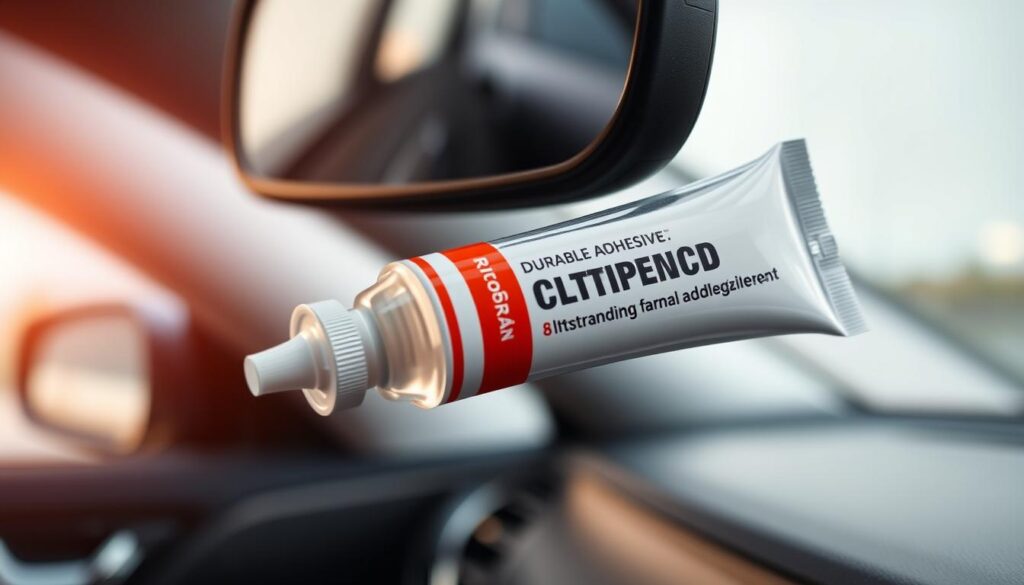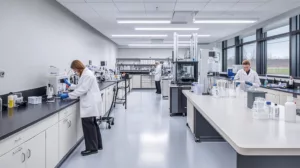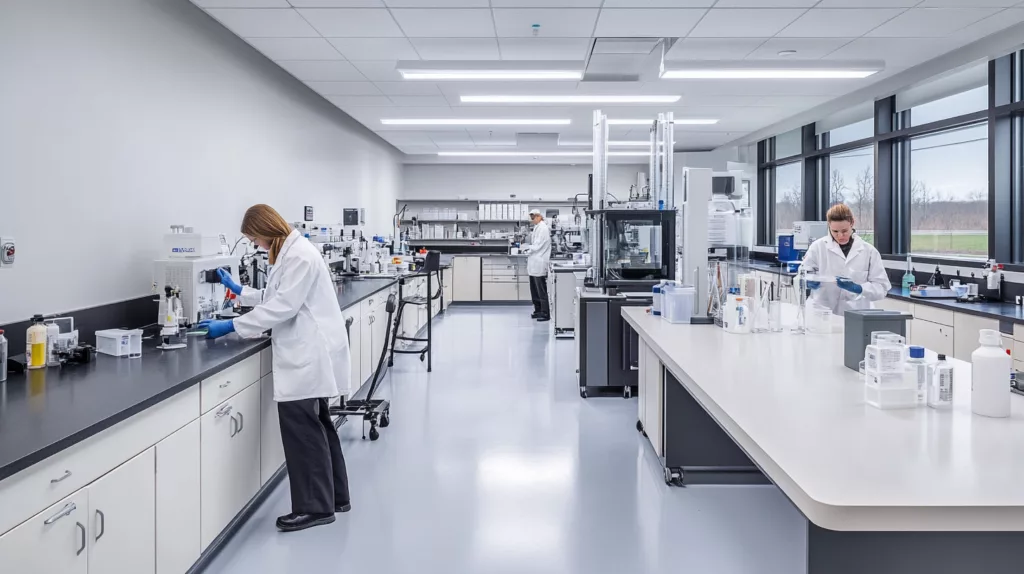Keeping your rearview mirror in place is key to safe and clear driving. This makes choosing the best durable glue very important. A well-attached mirror not only makes driving better but also helps keep the road safe. The ideal glue for car mirrors must bind strongly and resist different weather conditions.
In our search for the top car mirror glue, we’ll look at various options. We’ll focus on those adhesives that are strong enough for cars. A good choice means your mirror stays put longer, making driving safer and better.
Key Takeaways
- Choosing the right durable glue for car rearview mirror is essential for safety.
- Strong adhesive for rearview mirror applications needs to withstand environmental conditions.
- A reliable automotive adhesive ensures long-lasting performance.
- Different types of car mirror glue have varying properties and strengths.
- Securing a rearview mirror properly enhances overall driving experience.
Understanding the Importance of Reliable Adhesives
In the world of cars, sticking parts together well is super important. Adhesives make sure things like mirrors don’t fall off, keeping everyone safe. A good glue for mirrors faces many tests, like shakes and temperature changes.
Putting in a mirror? Use a top-notch glue. If the mirror doesn’t stick well, it could be risky while driving. A trustworthy adhesive makes driving safer and feels better too.
Don’t forget about weather and sunlight. Good glues stand up to rain, heat, cold, and sun. They keep strong for a long time. This means you won’t have to fix things often, making your car more reliable.
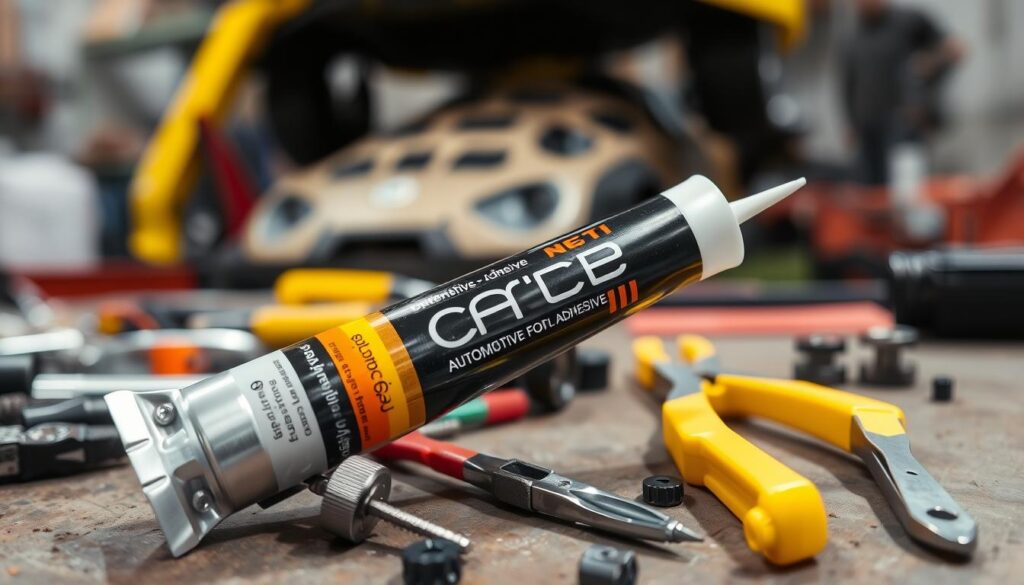
Finding the perfect adhesive matters a lot. It’s key for both car makers and hobbyists. High-quality glues mean you can drive without worries. They keep mirrors and other parts firmly attached.
What Makes a Glue Durable for Car Mirrors?
Understanding the mix and traits of adhesives for cars is essential. A long-lasting glue for car mirrors must resist many environmental factors. It also needs the right materials in its makeup.
Material Composition
The ingredients of an automotive glass adhesive are fundamental. Strong adhesives for cars often use tough polymers and bonding chemicals. These boost their lifespan and effectiveness. They include:
- Polyurethane: It’s flexible and bonds strongly.
- Silicone: Handles temperature well and resists moisture.
- Epoxy: It’s very strong, great for key support spots.
Resistance to Environmental Factors
A good car mirror glue must withstand the elements. It should hold up against:
- Extreme temperatures: This keeps the glue working through different seasons.
- Humidity: Staying strong despite moisture is crucial.
- UV rays: Sunlight won’t harm its bonding power.

| Property | Polyurethane | Silicone | Epoxy |
|---|---|---|---|
| Flexibility | High | Moderate | Low |
| Temperature Tolerance | Moderate | High | High |
| Moisture Resistance | High | High | Moderate |
| UV Resistance | Moderate | High | Low |
By considering these factors, the bond will last. This ensures the mirror stays in place, no matter the driving conditions.
Top Features to Look for in Automotive Adhesive
When choosing adhesive for your car mirror, some features really stand out. These features ensure the adhesive lasts long and performs well under tough conditions. It’s important to know these features for the best results.
Quick Setting Time
Quick setting time is vital for any car mirror glue. It lets you repair your car faster, reducing downtime. Seek products that bond parts in just minutes, making installation quick and easy.
Temperature Tolerance
Cars deal with all kinds of temperatures, from very hot to extremely cold. Hence, it’s crucial to use an adhesive that can handle these extremes for mirror installation. Choose adhesives that keep their strength in any weather, ensuring a strong bond all the time.
Water and UV Resistance
Water and sun exposure can weaken adhesives over time. Top-notch automotive adhesives resist both moisture and UV rays well. This keeps the bond strong between the car mirror and where it’s attached, ensuring it lasts.
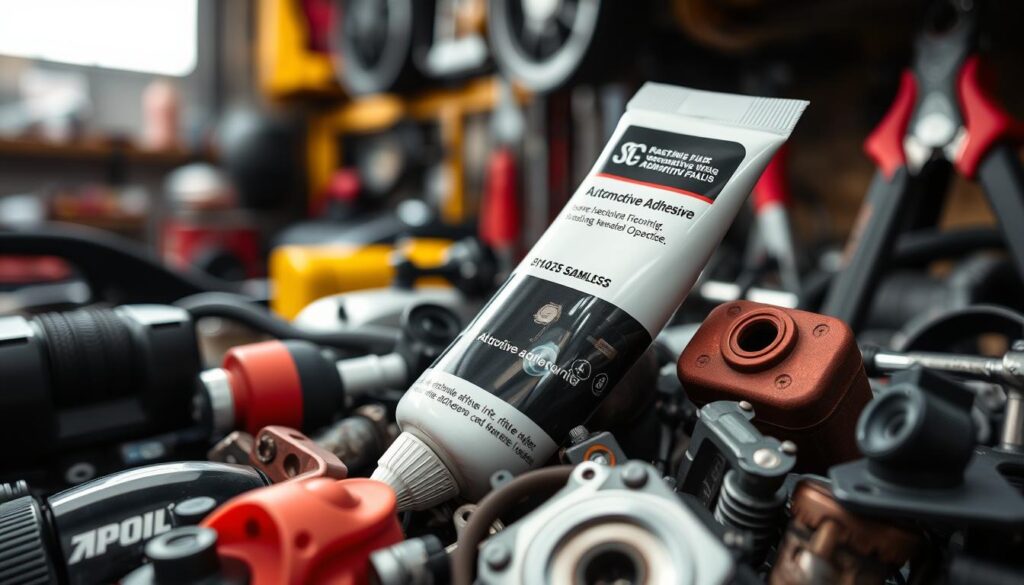
Durable Glue for Car Rearview Mirror: A Comprehensive Review
Choosing the right adhesive for a car’s rearview mirror is important for safety. We will look at different types of glues available. We’ll also talk about the best options and their good and bad points. This helps make sure the mirror stays in place for a long time.
Types of Adhesives Available
There are several adhesives made for attaching rearview mirrors to cars. Here are the main kinds:
- Cyanoacrylate Adhesives: They bond quickly, good for small mirrors.
- Epoxy Resins: They are very strong, best for heavy mirrors.
- Polyurethane Adhesives: They are flexible and resist weather well, great for outdoor use.
Best Rated Products
Many products are known for being strong glues for rearview mirrors. Here are a few of the top choices:
| Product Name | Type | Setting Time | Strength |
|---|---|---|---|
| 3M Rearview Mirror Adhesive | Polyurethane | 10-15 minutes | High |
| Permatex Ultra Black | Silicone | 1 hour | Medium |
| JB Weld Epoxy | Epoxy Resin | 4-6 hours | Very High |
Pros and Cons of Each Option
Knowing the good and bad of each adhesive helps choose the right one. Here are the pros and cons:
- 3M Rearview Mirror Adhesive
- Pros: Sets fast, very strong, great for cars.
- Cons: Might not stick to some plastics well.
- Permatex Ultra Black
- Pros: Very flexible, good against the weather.
- Cons: Takes longer to set than some.
- JB Weld Epoxy
- Pros: Super strong, works in hard conditions.
- Cons: Needs a long time to dry before use.
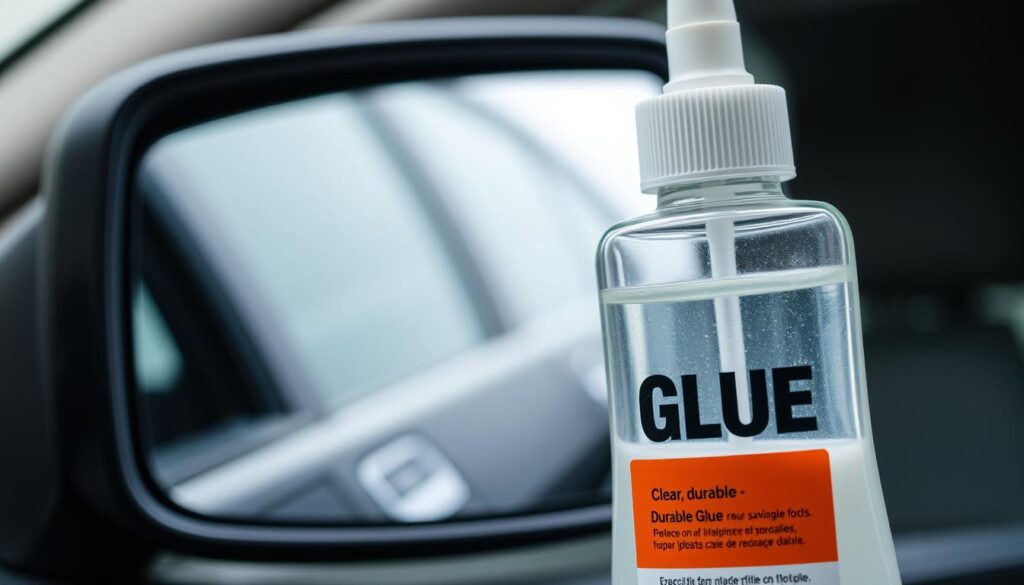
How to Properly Use Car Mirror Glue
Using car mirror glue correctly is vital for a strong, lasting bond. It ensures that your mirrors stay put safely and permanently. This makes a big difference in how well your car mirrors stick.
To start, make sure the mirror and mount area are clean. They need to be dry and free of old glue. This step makes the adhesive work better.
Then, follow the glue’s instructions when applying. A little goes a long way—using too much can actually be bad. The right amount creates a solid, spill-free seal.
Place the mirror carefully after putting on the glue. Let it set without moving it, following the time given on the package. This could be a few hours or even a full day.
These steps help avoid any bond failures and increase efficiency. For more tips on picking the right glue, check out this useful guide.
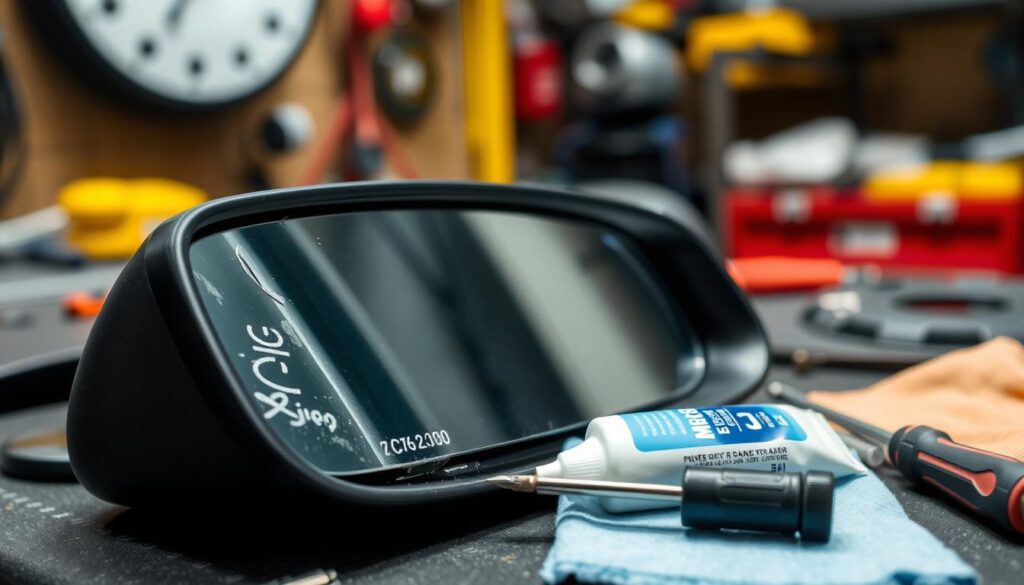
Step-by-Step Guide to Installing Your Rearview Mirror
Install your rearview mirror with care and focus. A step-by-step approach makes it easy for everyone.
Whether you’re a professional or a DIY fan, using a strong adhesive is key.
This guide walks you through each necessary step, guaranteeing a secure attachment.
Preparation
Gather your tools and materials first. Make sure the area’s clean, without dust or grease. Clean the surface using a special cleaner.
Picking a strong adhesive meant for cars is crucial. Follow the adhesive’s prep instructions, paying attention to mix ratios.
Application
Now, apply the adhesive with care. Spread it evenly using a tool or applicator. Press the mirror onto it without moving it around.
The amount of adhesive matters, so follow the guidelines for the best bond.
Drying and Curing Time
Let the adhesive dry as directed.
It’s important for the installation’s strength. Keep the area still during drying. For the best results, check the automotive adhesives page for the right product.
The curing might take hours. Wait before driving to ensure everything’s set.
Choosing the Right Strong Adhesive for Rearview Mirror
Picking the correct adhesive for your rearview mirror is vital. It ensures the mirror stays in place, keeping you safe. You must consider several factors to find a strong glue for your car’s mirror. Knowing these factors aids in making a smart choice.
Factors Influencing Your Choice
- Compatibility with different mirror types and car surfaces is key. The adhesive should be made for cars specifically.
- Setting time matters; pick an adhesive that sets quickly. This lets you use it right away.
- Temperature range shows how the glue holds up in various climates.
- Resistance to water and sunlight adds to its life, especially outside.
Brands You Can Trust
When you need reliable car adhesive, look for trusted brands. Here are some top names in the market:
| Brand | Product Type | Features |
|---|---|---|
| 3M | Automotive Adhesive | Strong bond, water-resistant, sun proof |
| P AT | Mirror Adhesive | Fast setting, withstands temperature changes, simple to use |
| Permatex | Professional Grade Adhesive | Tough, powerful strength, lasts a long time |
Automotive Glass Adhesive vs. Regular Adhesives
Not all adhesives are the same when fixing a car’s rearview mirror. Automotive glass adhesive is key for lasting and stable repairs. It’s made for the car environment challenges, making it the best choice for mirror installation.
Why Automotive Adhesive Matters
Automotive adhesives are made for the tough needs of cars. Regular glues might not last or be as strong under car conditions. Using a strong adhesive for the rearview mirror keeps it secure, safe, and working well.
Comparative Analysis
Below is a comparison between automotive glass adhesives and regular adhesives:
| Feature | Automotive Glass Adhesive | Regular Adhesive |
|---|---|---|
| Temperature Resistance | High | Moderate |
| Bond Strength | High | Variable |
| Environmental Resistance | Excellent | Poor |
| Application Suitability | Automotive Specific | General Purpose |
To learn more about picking the right adhesive, check out automotive adhesive solutions for reliable and long-lasting repairs. The right glue improves repair quality and vehicle safety.
Common Problems When Using Rearview Mirror Adhesive
Many find common problems with rearview mirror adhesive a hurdle. It blocks effective bonding. Knowing what goes wrong and how to succeed is key. Rightly using automotive adhesive helps solve these problems.
Failures and Troubleshooting Tips
Several factors can mess up the adhesive’s application:
- Poor bond strength: This often results from selecting an inappropriate adhesive or applying it under unsuitable conditions.
- Uneven surfaces: If the surfaces are not level or clean, the bond may not form correctly.
- Environmental influences: Extreme temperatures, humidity, or pollutants can compromise the integrity of the adhesive.
To fix these issues:
- Evaluate the adhesive: Ensure you’re using high-quality automotive adhesive designed for the rearview mirror application.
- Check surface conditions: Clean and prepare surfaces meticulously to remove any dust, grease, or moisture that might inhibit adhesion.
- Allow sufficient curing time: Follow manufacturer guidelines regarding drying and curing times for optimal results.
Importance of Surface Preparation
Prepping the surface is key for a solid bond. Skipping this step can bring about common problems with rearview mirror adhesive. Focus on these factors:
- Cleaning: Both surfaces must be scrubbed thoroughly; using a glass cleaner followed by isopropyl alcohol can yield the best results.
- Patching: If there are any imperfections, they should be patched to avoid uneven bonding layers.
- Understanding the adhesive: Different automotive adhesives may have unique requirements for surface conditions; consult the manufacturer’s recommendations to choose the correct product.
By paying attention to these areas, users can lessen problems. This ensures a firm hold for the rearview mirrors.
Real-Life Applications: User Experiences with Rearview Mirror Adhesive
People have shared many stories about using rearview mirror adhesives. These stories come from both experts and those who like to do things themselves. They show us how strong adhesives for cars can solve problems in our daily lives.
Success Stories
Many have shared their good results with rearview mirror adhesive. Drivers often find that the right adhesive keeps their mirrors firmly in place. This stays true even in tough situations.
- One person said that after a small accident, their mirror didn’t break off. This was because they used a really tough adhesive.
- A driver talked about using adhesive in very bad weather. While other products didn’t work, their choice did the job well.
Lessons Learned
People have also shared what they’ve learned from using different adhesives. Here are some tips.
- Many say it’s important to clean where you’re going to stick the mirror. This helps the adhesive work better.
- Some car fans say that using a strong adhesive made just for mirrors can make a big difference.
- Knowing how long the adhesive takes to set and what the weather should be like can prevent problems. This helps mirrors stay on longer.
| User Feedback | Product Used | Outcome |
|---|---|---|
| Excellent adhesion and durability | 3M Super Strength Adhesive | Mirror stayed secure through rough terrain |
| Weather resistance was tested | Permatex Rearview Mirror Adhesive | No peeling or detachment during winter |
| Successful bonding after impact | Loctite Glass Glue | Mirror remained attached post-accident |
Maintenance Tips for Rearview Mirrors
Keeping your rearview mirrors in great shape requires regular checks. It’s important to follow certain tips to ensure they stay attached and work well. This keeps us safe on the road and makes the mirror’s glue last longer.
Checking Adhesive Bond Over Time
It’s key to keep an eye on the mirror’s adhesive bond. Look for any gaps between the mirror and windshield, a sign of loosening. If you spot any issues, inspect it quickly to avoid further problems. Addressing this early can save you from bigger repairs later. Check out this guide for help with adhesive concerns.
Cleaning Best Practices
Correct cleaning methods are vital to keep your mirrors in top condition. Use a soft cloth and the right glass cleaner for the mirror and windshield. Stay away from strong chemicals or rough cloths that could harm the glue. A gentle clean keeps your mirrors clear and the adhesive strong.
Benefits of High Strength Adhesive for Automobiles
Choosing high strength adhesives for cars offers great benefits. These adhesives improve safety and save money over time. They are perfect for both car makers and people who enjoy DIY projects.
Safety Enhancements
High strength adhesives make cars safer. They ensure parts stick together well, especially in key areas. This is important for:
- Greater resistance to impact forces.
- Improved ability to handle stress during driving.
- Minimized risk of component failure, ensuring passenger safety.
Long-Term Cost Savings
Using strong adhesives can also help save money in the long run. Parts stay in place longer, meaning fewer repairs. This leads to:
- Lower maintenance costs from fewer repairs.
- Extended lifespan of automotive parts due to superior adhesion.
- Reduced labor costs associated with repeat applications.
| Feature | High Strength Adhesive | Traditional Adhesive |
|---|---|---|
| Durability | High | Medium |
| Impact Resistance | Excellent | Poor |
| Cost Over Time | Low | High |
| Application Ease | Moderate | Easy |
Conclusion
Choosing the right durable glue for car mirrors is very important. It makes cars safer and more functional. We have shown that not all glues work the same.
By looking carefully and knowing what cars need, we can choose wisely. Good auto glue keeps mirrors in place longer, cuts down on glue problems, and makes driving safer.
Whether you’re a pro or like doing things yourself, use strong glue for car mirrors. This will bring great results, making sure the mirrors hold tight no matter the situation.
By picking high-quality glue, we show we care about safety and doing a good job. Good choices and how we use them make our car projects not just work well but last long.
FAQ
What is the best durable glue for car rearview mirrors?
The top choice for car rearview mirror glue is one with strong adhesive qualities. It should also resist environmental factors well. Look for automotive adhesives made for mirror installation. They provide a firm bond to keep the mirror in place.
How do I choose the right automotive adhesive for my rearview mirror?
When picking adhesive for your rearview mirror, consider how quickly it sets, its temperature range, and if it resists water and UV light. Choose products labeled for automotive use for the best results.
Can I use regular glue for my car mirror installation?
Using regular glue for car mirrors is not recommended. Automotive glass adhesives are designed for the unique conditions in vehicles. They ensure a lasting bond despite temperature changes and vibrations.
How long does it take for car mirror glue to dry?
The drying time for car mirror glue depends on the adhesive. Many need several hours to dry fully. To reach their strongest bond, it can take up to 24 hours.
What are the common problems when using rearview mirror adhesive?
Common issues include not preparing the surface well, leading to weak adhesion. Also, some adhesives aren’t made for cars. Always clean the surface and use strong, automotive-specific glue.
What should I consider for surface preparation before using adhesive for vehicle mirrors?
For the best prep, clean the area you’ll attach the mirror to with isopropyl alcohol. This removes dirt and grease. It helps the adhesive bond strongly to the car mirror.
Are there specific brands known for high-quality rearview mirror adhesive?
Yes, brands like 3M, Loctite, and Permatex are trusted for their rearview mirror adhesives. They make products that create a strong and durable bond for mirrors.
How can I ensure a permanent bond for my car mirrors?
To ensure your car mirror stays in place, choose a durable glue made for cars. Carefully follow the instructions for applying and drying it. Check the adhesive regularly over time for the strongest hold.


